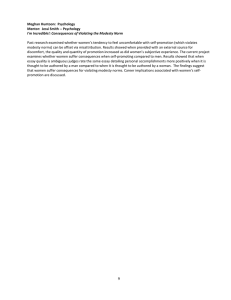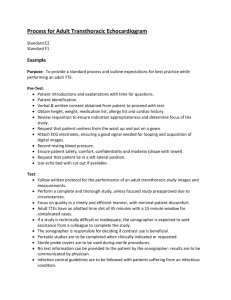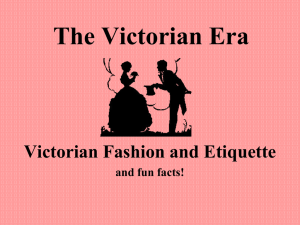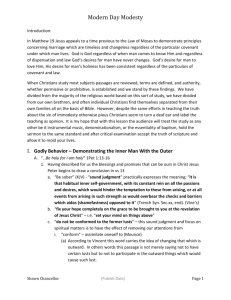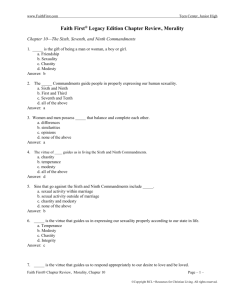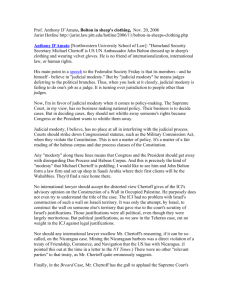Brainstorm everything you know about the Victorian Era
advertisement
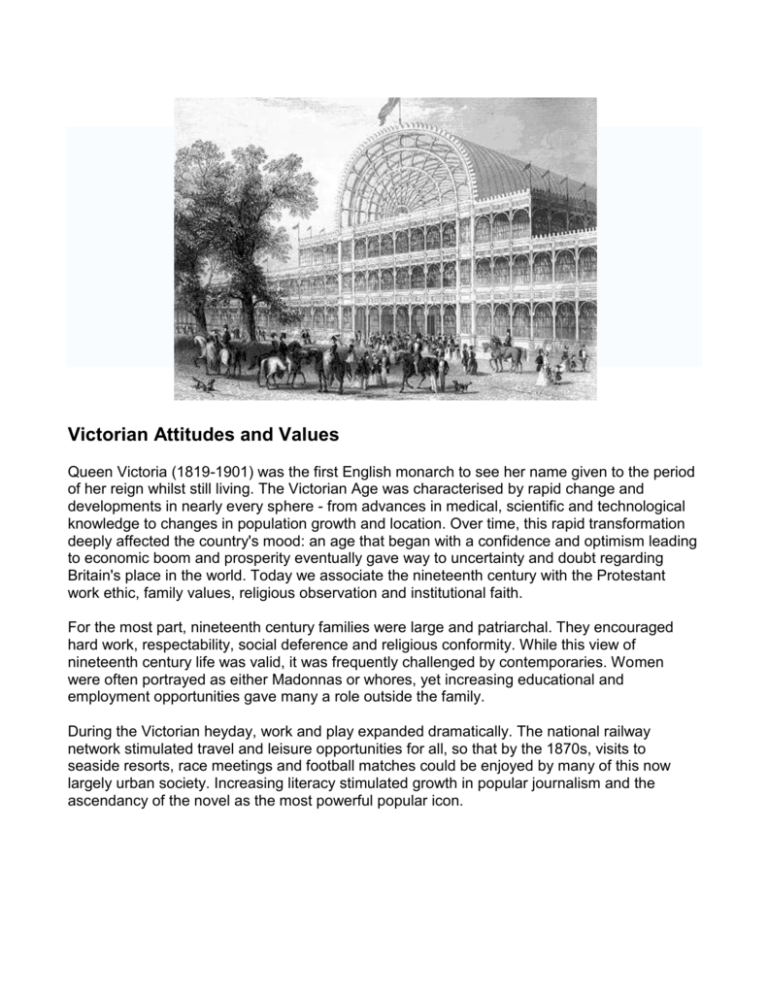
Victorian Attitudes and Values Queen Victoria (1819-1901) was the first English monarch to see her name given to the period of her reign whilst still living. The Victorian Age was characterised by rapid change and developments in nearly every sphere - from advances in medical, scientific and technological knowledge to changes in population growth and location. Over time, this rapid transformation deeply affected the country's mood: an age that began with a confidence and optimism leading to economic boom and prosperity eventually gave way to uncertainty and doubt regarding Britain's place in the world. Today we associate the nineteenth century with the Protestant work ethic, family values, religious observation and institutional faith. For the most part, nineteenth century families were large and patriarchal. They encouraged hard work, respectability, social deference and religious conformity. While this view of nineteenth century life was valid, it was frequently challenged by contemporaries. Women were often portrayed as either Madonnas or whores, yet increasing educational and employment opportunities gave many a role outside the family. During the Victorian heyday, work and play expanded dramatically. The national railway network stimulated travel and leisure opportunities for all, so that by the 1870s, visits to seaside resorts, race meetings and football matches could be enjoyed by many of this now largely urban society. Increasing literacy stimulated growth in popular journalism and the ascendancy of the novel as the most powerful popular icon. Modesty Noah Webster's 1828 dictionary states: MOD'ESTY, n. [L. modestia.] That lowly temper which accompanies a moderate estimate of one's own worth and importance. This temper when natural, springs in some measure from timidity, and in young and inexperienced persons, is allied to bashfulness and diffidence. In persons who have seen the world, and lost their natural timidity, modesty springs no less from principle than from feeling, and is manifested by retiring, unobtrusive manners, assuming less to itself than others are willing to yield, and conceding to others all due honor and respect, or even more than they expect or require. 2. Modesty, as an act or series of acts, consists in humble, unobtrusive deportment, as opposed to extreme boldness, forwardness, arrogance, presumption, audacity or impudence. Thus we say, the petitioner urged his claims with modesty; the speaker addressed the audience with modesty. 3. Moderation; decency. 4. In females, modesty has the like character as in males; but the word is used also as synonymous with chastity, or purity of manners. In this sense, modesty results from purity of mind, or from the fear of disgrace and ignominy fortified by education and principle. Unaffected modesty is the sweetest charm of female excellence, the richest gem in the diadem of their honor. Web Research Questions http://www.billtelford.net/MsDalton/victorianlife.htm http://www.victorianweb.org/ 1. What was life like for a middle class family during the Victorian Era? 2. What were some of the cultural beliefs, attitudes, or values at the time? 3. What kind of education would most middle class children receive (be sure to mention any distinctions between boys and girls)? 4. What occupational choices were available for middle class men and women? 5. What role did politics, religion, or science play in most middle class families? 6. What would a typical middle-class family do for entertainment? o o o o o o o Art and literature Holidays Clothing Inventions Law and justice Music and dance Role of women
